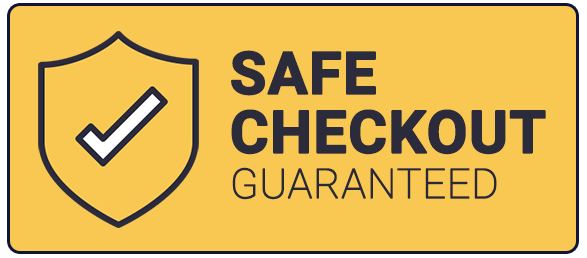What is Return of Spontaneous Circulation (ROSC)?The return of spontaneous circulation (ROSC) is the primary goal of resuscitation of a cardiac arrest patient using basic and advanced life support measures. What happens during cardiac arrest?Cardiac arrest can occur when the heart’s electrical system stops working properly, which can lead to an abnormal heart rhythm. In addition, besides constant palpation of a carotid pulse, waveform capnography is the most reliable prehospital monitoring device to detect the immediate loss of circulation. Lastly, providing high quality CPR, sometimes combined with defibrillation, can be used to attempt resuscitation with the ultimate goal of achieving ROSC. What are a Few Signs of ROSC?A few signs of ROSC might include: 1. Movement 2. Coughing 3. Breathing 4. Detectable pulse 5. Measurable blood pressure 6. Increase in ETCO2 Although ROSC is a positive sign and the ultimate goal of CPR, post-resuscitation care must be tailored to the needs of the individual patient. A clinical Look at rosc in mEDICINEThe measurement for ROSC involves the assessment of noticeable signs like breathing or movement, as well a fluctuations in ETCO2. A sudden increase in ETCO2 is often the first sign of return of spontaneous circulation (ROSC), even before a carotid pulse can be detected .Some of these causes might become apparent during resuscitation of the patient, especially while evaluating the 5Hs and 5Ts of cardiac arrest. In order to achieve ROSC it is critical to focus on the advantages of high-quality CPR with adequate chest compressions and rescue breaths. The ability to achieve the proper compression depth, minimize compression interruptions, and the addition of antiarrhythmic drugs will often proven advantageous for the patient resulting in ROSC. CPR Training to achieve rosc!As a healthcare provider or caregiver, it is important to provide patients the best odds of ROSC by knowing and understanding high-quality resuscitative measures. A CPR and AED certification class gives you the chance to review your knowledge and practice your skills so you are prepared to provide lifesaving measures in a cardiac emergency. Help-A-Heart CPR offers training classes taught by experts in the field who are committed to making training informative and fun. With better focus during class and greater retention afterward, you will be equipped to give your patients the highest level of care possible.
Help-A-Heart CPR offers classes at our Texas locations, as well as online and on-site. Contact us today to get our current class schedule.
Comments
|
AuthorDr. Tracy A. Jones is the CEO of Help-A-Heart CPR, LLC and an American Heart Association, ASHI, and American Red Cross Master Program Trainer, Instructor, & AHA Faculty Member located in San Antonio, Texas. Archives
June 2024
Categories |
Help-A-Heart CPR, LLC | 1747 Citadell Plaza Suite 101 | San Antonio, Texas 78209 | (210) 380-5344 | [email protected]
Copyright © Help-A-Heart CPR, LLC 2024
100% Certification Acceptance
We promise your employer, school, or agency will accept the certification card we issue to you. If there is a question of acceptance or validity, simply send us an email at [email protected] with full details. We will reach out to the individual/entity and provide accreditation information. If still there’s a question, we will provide you with a full refund of your class fee. It’s that simple.
We promise your employer, school, or agency will accept the certification card we issue to you. If there is a question of acceptance or validity, simply send us an email at [email protected] with full details. We will reach out to the individual/entity and provide accreditation information. If still there’s a question, we will provide you with a full refund of your class fee. It’s that simple.
|
Communities Served
ALABAMA: Birmingham
ARKANSAS: Fayetteville, Hot Springs, Jonesboro, Little Rock NEW MEXICO: Albuquerque TENNESSEE: Knoxville TEXAS: Amarillo, Arlington, Austin, Bandera, Bastrop, Boerne, Brownsville, Comfort, Converse, Corpus Christi, Dallas/Ft. Worth, Del Rio, Dripping Springs, El Paso, Floresville, Fredericksburg, Georgetown, Harlingen, Houston, Junction, Katy, Kerrville, Kingsville, Kingwood, Laredo, Lubbock, Lufkin, McAllen, Midland, New Braunfels, Odessa, Pleasanton, Round Rock, San Angelo, San Marcos, Schertz, Seguin, Taylor, Temple, Texarkana, Tyler, Universal City, Victoria, Waco, The Woodlands |
Why Choose Help-A-Heart CPR?
1. Flexible Scheduling
2. On and Off Location Training Available 3. Casual, Fun Atmosphere 4. Best Price Guarantee 5. All Instructors are AHA and/or ARC certified 6. 5 Star Google Reviews 7. Blended Learning (Online & Skills Check) Available 8. Meets OSHA & College CPR Requirements 9. Get Certified Within 3-4 Hours 10.Certification Is Good For Two Years 11. Official AHA/ARC/ASHI Training Site 12. High Quality Safety Training! |








